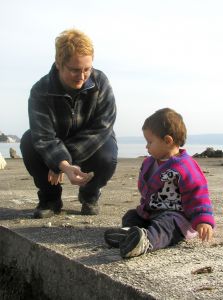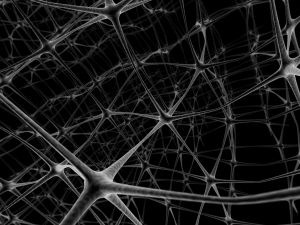By Rita Brhel, managing editor and attachment parenting resource leader (API)
 Through Attachment Parenting, we learn how truly powerful a close emotional relationship with our children can be. But even with the strongest of bonds, conflict will arise between parents and their children. As children grow, AP focuses more and more on how we, as parents, resolve conflict — in a gentle, positive manner that promotes influence, guidance, and teaching rather than control.
Through Attachment Parenting, we learn how truly powerful a close emotional relationship with our children can be. But even with the strongest of bonds, conflict will arise between parents and their children. As children grow, AP focuses more and more on how we, as parents, resolve conflict — in a gentle, positive manner that promotes influence, guidance, and teaching rather than control.
Much of the root of conflict resolution resides in our own selves – in dealing with our own unresolved hurts and biases, as well as finding personal balance, so that we can control the urge to jump to conclusions and react without thinking. And so that we can have the courage to stop in the moment, take a deep breath, and think about how to control our default thinking to be able to react with compassion instead of anger and defensiveness.
Another important piece of this puzzle is understanding how personality differences play into both conflict and conflict resolution. Think about what is most likely to create conflict between you and your spouse or partner: Often, isn’t it because you two do the same thing in different ways? My husband and I encounter this all the time. I am much more detail-oriented than my husband and sometimes don’t understand why he doesn’t see the crumbs on the table, while he wonders why I care so much about the crumbs. The same situation can happen between you and a child who doesn’t see the world in the same way.
Personality Assessments as a Way to Get to Know Your Child Better
The point of discovering your child’s personality traits is not to put a label on him, or to try to compartmentalize the reason behind his actions. Instead, it is another way for parents to get to know their child more — to discover what makes him tick. Continue reading When ‘D’ Meets ‘S’: The Role of Personality in Parenting
 A study to be published in the March issue of Behavior Therapy, “Generalized Anxiety Disorder: Connections with Self-Reported Attachment,” credits secure parent-child attachment in lessening the risk of that child eventually developing a severe anxiety disorder as an adult.
A study to be published in the March issue of Behavior Therapy, “Generalized Anxiety Disorder: Connections with Self-Reported Attachment,” credits secure parent-child attachment in lessening the risk of that child eventually developing a severe anxiety disorder as an adult. Your child is naturally imaginative — all children are. Most theories of child development view young children as highly creative, with a natural tendency to fantasize, experiment, and explore their physical and conceptual environment.
Your child is naturally imaginative — all children are. Most theories of child development view young children as highly creative, with a natural tendency to fantasize, experiment, and explore their physical and conceptual environment. Dear Readers,
Dear Readers,
 A study published in the Development Pyschobiology journal involving the care of orphaned chimpanzees could help change the way human orphans are cared for.
A study published in the Development Pyschobiology journal involving the care of orphaned chimpanzees could help change the way human orphans are cared for.
 Adverse experiences early in life can lead to minor childhood behavior problems, which can grow into serious acts of teen violence, according to new research. This “cascading effect” of repeated negative incidents and behaviors is the focus of an article in the November/December 2008 edition of Child Development.
Adverse experiences early in life can lead to minor childhood behavior problems, which can grow into serious acts of teen violence, according to new research. This “cascading effect” of repeated negative incidents and behaviors is the focus of an article in the November/December 2008 edition of Child Development. According to an article on Guadian.co.uk, “Postnatal Depression and Your Baby,” the length of a new mother’s postpartum depression has a strong tie with the difficulties she’ll experience in establishing a close attachment with her baby.
According to an article on Guadian.co.uk, “Postnatal Depression and Your Baby,” the length of a new mother’s postpartum depression has a strong tie with the difficulties she’ll experience in establishing a close attachment with her baby. Depression — a mental illness marked by unrelenting sadness and hopelessness that permeates the lives of an estimated one in 18 people — is among the most prevalent medical disorders in today’s world, affecting 12 percent of women, 7 percent of men, and 4 percent of adolescents in a given year. Eight percent of adults will develop depression sometime in their life, and women are most prone — their lifetime risk is 20 percent.
Depression — a mental illness marked by unrelenting sadness and hopelessness that permeates the lives of an estimated one in 18 people — is among the most prevalent medical disorders in today’s world, affecting 12 percent of women, 7 percent of men, and 4 percent of adolescents in a given year. Eight percent of adults will develop depression sometime in their life, and women are most prone — their lifetime risk is 20 percent.